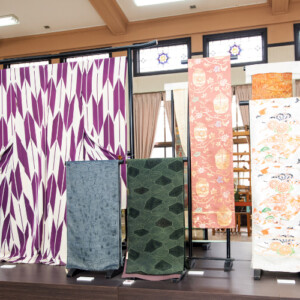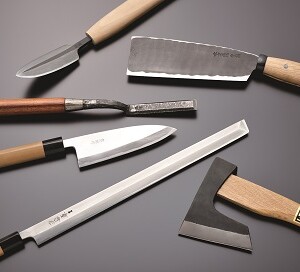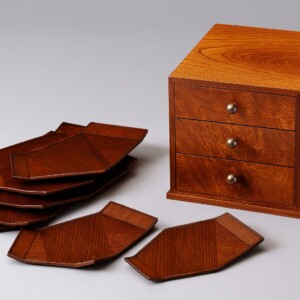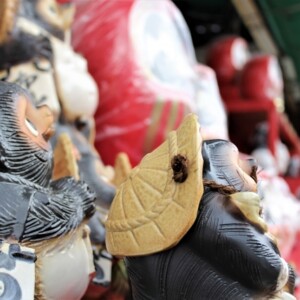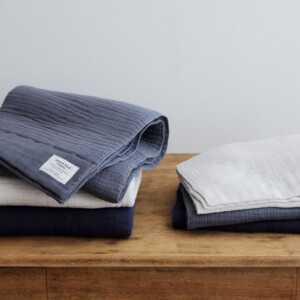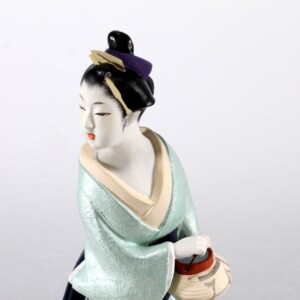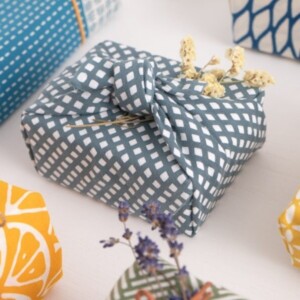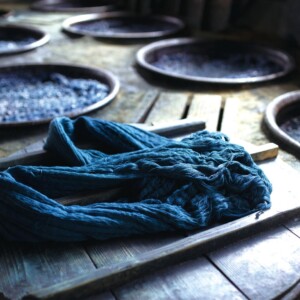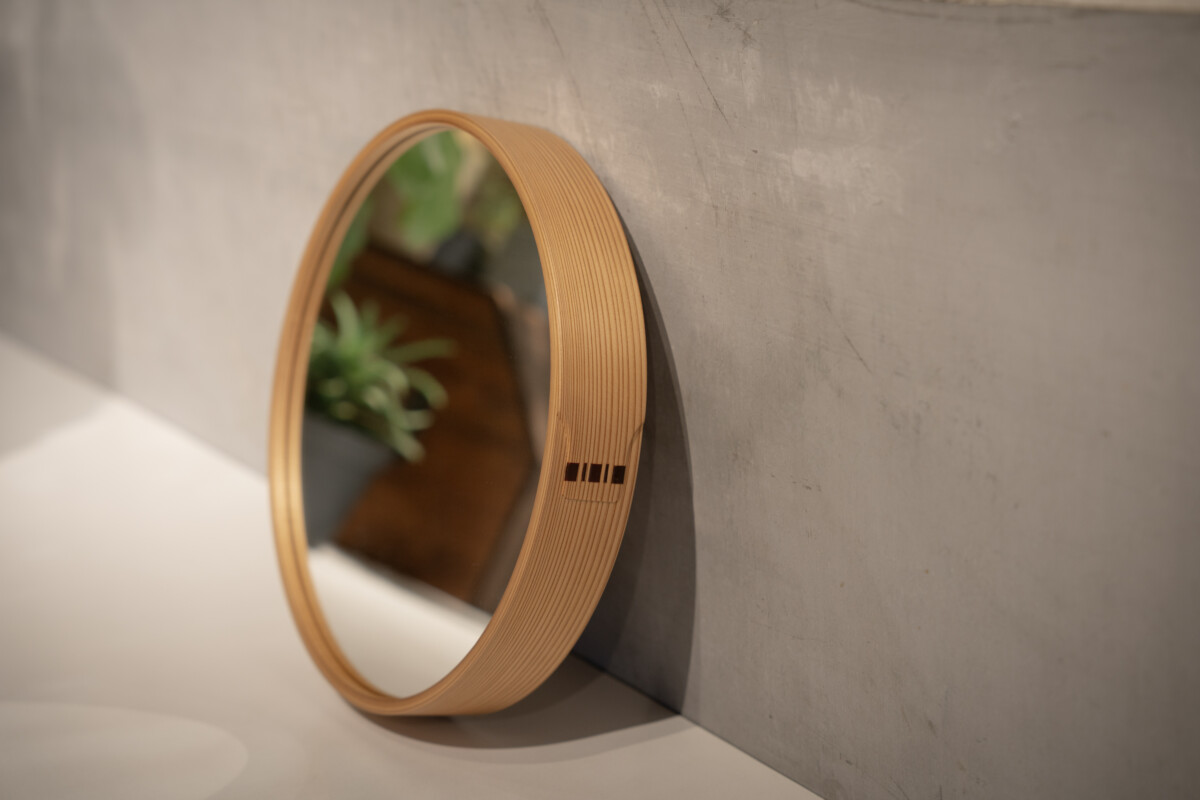
Aiming for a Big Roof in Akita, Japan
The company logo of Kasane tsugumu,LLC consists of three lines that are combined from the left and right to form a roof, with the company name clearly written under the roof.The logo represents the concept of “work, things, and people” being “piled up and pieced together.” It is a house made of carefully spun yarn and a roof, with local makers, producers, and users of the products all gathered under a large roof.What kind of new world is spun out by a local label design companyrooted in the local community?
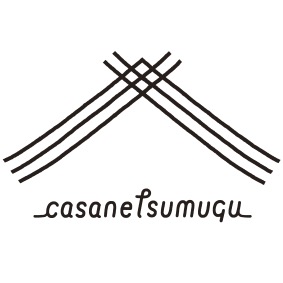
Waza – The Warmth of Hands Transmitted
As we call ourselves “Kita-Tohoku no Mise-en,” weat casane tsugumu are committed tocreating new products together with local makers by discovering and carefully involving traditional crafts, local industries, and other goods, people, and things that already exist in the area.
Here are some of the products that have been created based on this commitment.
Odate Bent Wappa “Wa MIRROR”, a nationally designated traditional craft
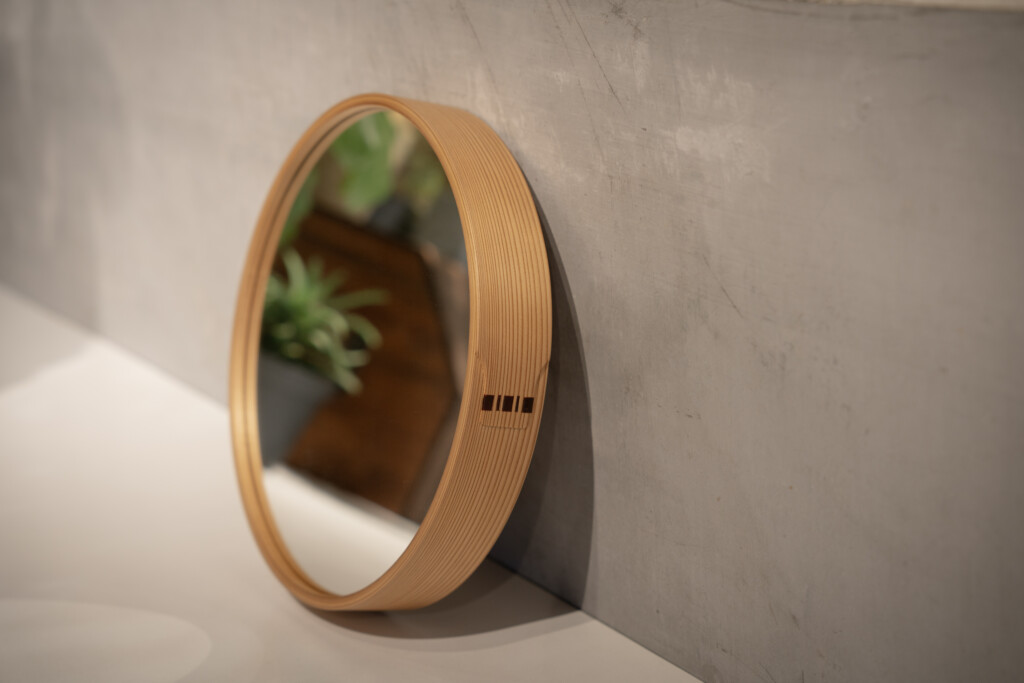
Wappa” is a box made by bending thin sheets of cedar, cypress, and other materials. It is famous as a souvenir such as a lunch box or a small container.casanetsumuguhas made full use ofthistechnique to create a one-of-a-kind mirror. That is “Wa MIRROR.
The raw material for Odate bent-wood, atraditional handicraft designated by the national government, was originally natural Akita cedar, a tree over 200 years old.
However, in 2013, the supply of natural Akita cedar from the national forests will cease due to conservation.For a while, the product was manufactured using natural Akita cedar stocked by each company, but nowadays, the product is manufactured using over 100- or 120-year-old Akita cedar, which is called “high-aged wood”.
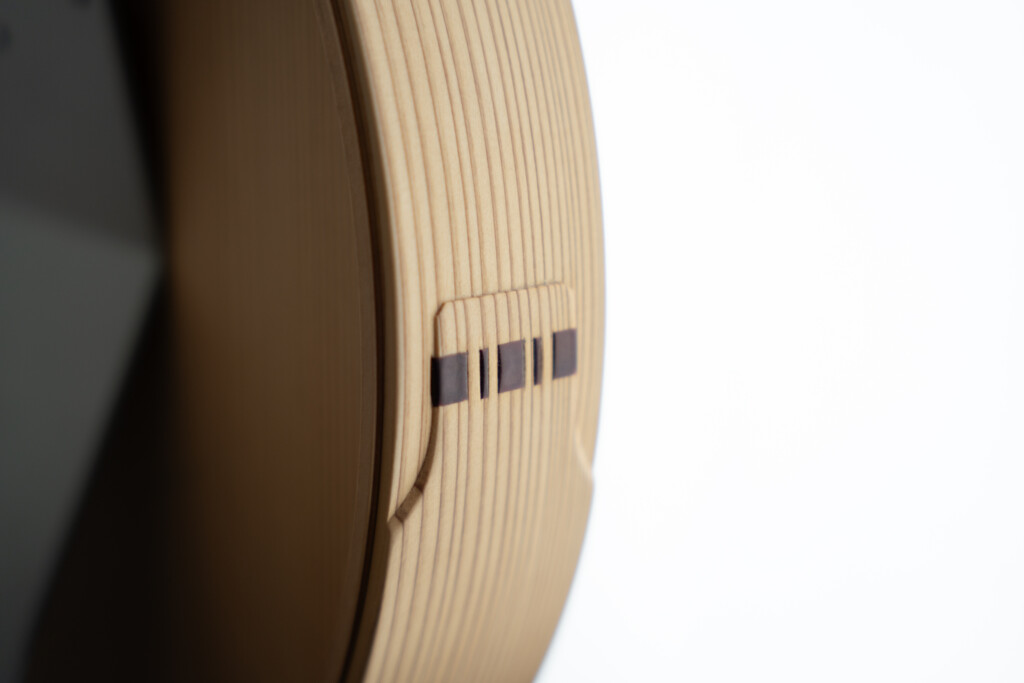
Masame wood used for Odate bent wappa is a very precious material with a uniformly straight grain, which is like the fatty part of tuna. Wa MIRROR” is a product that allows you to feel the beauty of the quarter-sawn grain.
The vertical grain of the wood draws beautiful curves that envelop the tranquility of the mirrored surface, and seems to warmly embrace the reflection in the mirror. Of course, it is assembled without using any nails, which is also gentle to the hand.
The finish is made with beeswax and vegetable oil, and the fragrance of the cedar wood is preserved, while the aging and luster of the wood can be enjoyed.
YATSU” CANISTER, a nationally designated traditional Kaba-zaiku (wild cherry bark work)
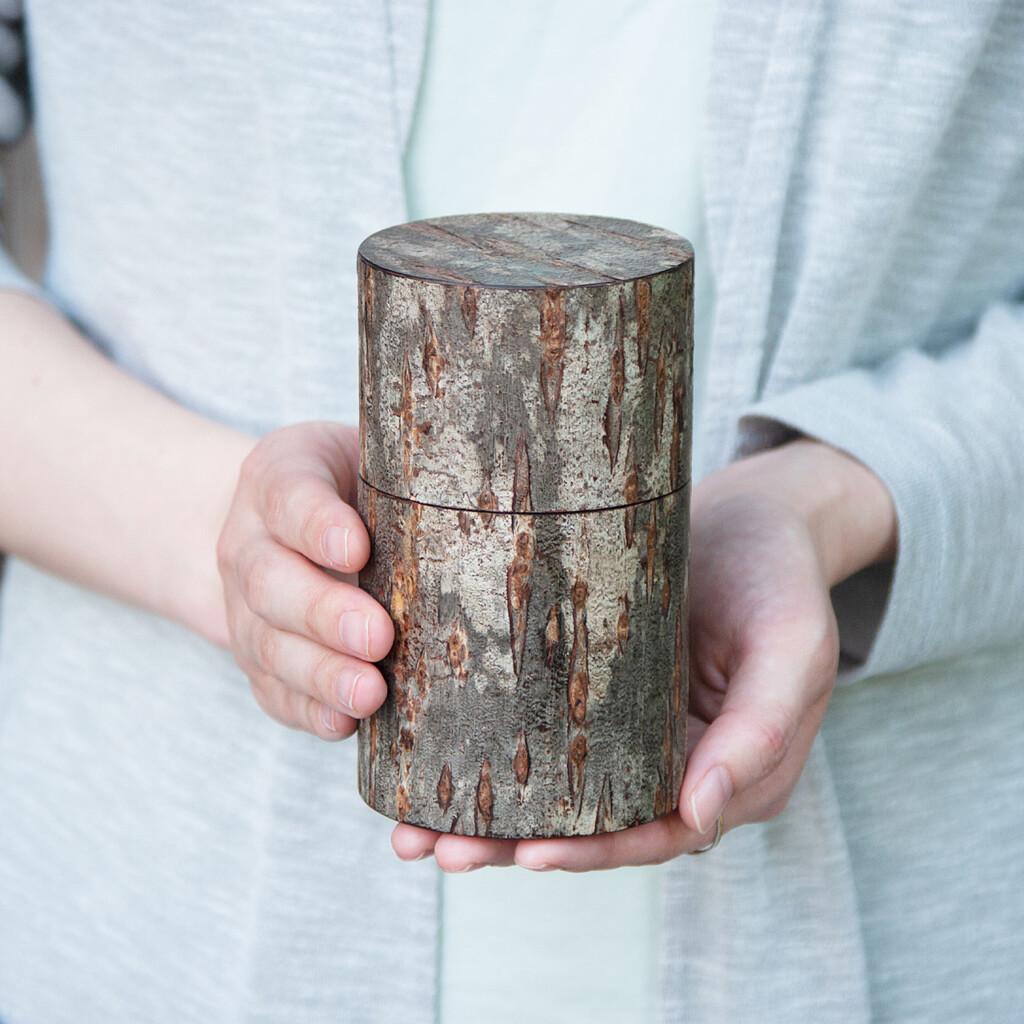
This is a joint brand launched in 2020 with YATSU YATSUYANAGI, a manufacturer of Kaba-zaiku (wild cherry bark work) established in 1876.
Kabazaiku is a nationally designated traditional handicraft made from the bark of mountain cherry trees, which is unique in the world and was introduced in Kakunodate-cho, Senboku City, Akita Prefecture, and spread as a domestic occupation for samurai.
The technique has been handed down from generation to generation, and the mountain cherry trees used as materials are harvested without letting them die, thus preserving the life of the trees.
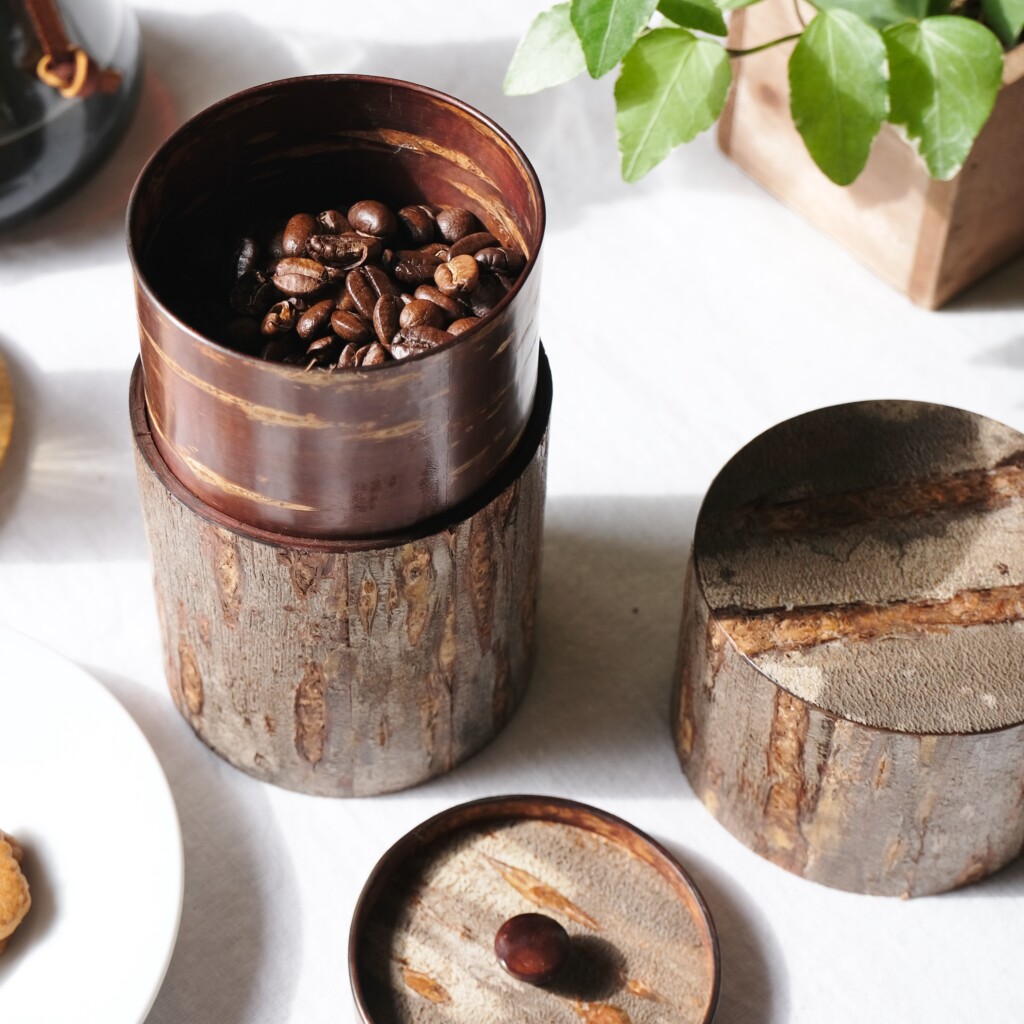
Kabazaiku is used to make medicine cabinets and other containers because of its ability to avoid moisture and prevent drying out. Since the Showa period (1926-1989), tea caddies have become a mainstay product of Kaba-zaiku, and the luster of the wild cherry tree grows with daily contact with the hand, preserving its unique luster. The greatest appeal of traditional crafts is that the spirit of love is also passed on with great care.
YATSU” products are made with an awareness of modern lifestyles while inheriting traditional techniques and production methods. This is a product made from “marbled bark”, a rare material with a simple and rough beauty among cherry bark.
Things, People – Opening the Door to Akita
Casanetsumugu’s commitment is not limited to producing products, but also to paving the way to Akita from outside the prefecture and from overseas.
Hibikiya Omagari Smoke Co.
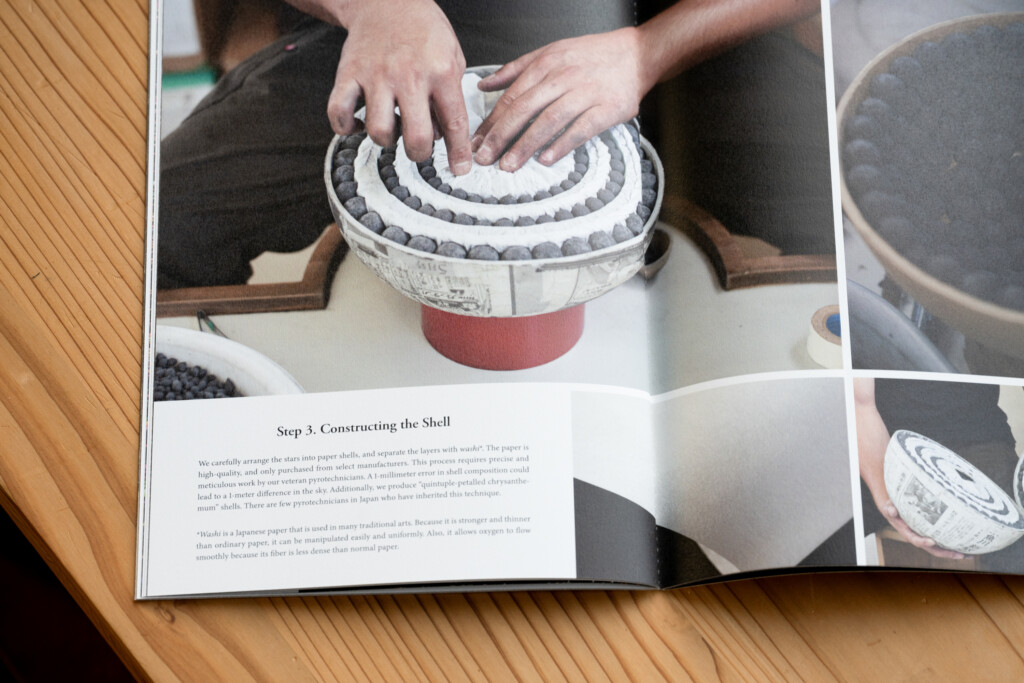
Founded in 1894, Hibikiya Omagari Smoke Co. is a company that manufactures, sells, and launches fireworks in Omagari, a town famous for the “Omagari Fireworks” national fireworks competition. Casane tsumugu has also produced an English-language corporate brochure for this company for the overseas market.
While China is said to account for 80.90% of the world’s fireworks production, Omagari is proud of its traditions and high technology, and we want to “connect Omagari fireworks to the world. This booklet, which overseas buyers can pick up with this desire of Hibikiya Omagari Fireworks, covers the entire process of manufacturing fireworks, including the charm and quality of Japanese fireworks, the manufacturing process, raw materials, manufacturing methods and facilities, etc., in pursuit of the best visuals. The simple, white binding contains the passionate spirit of the craftsmen who continue to hone and pass on their skills.
The future connected by casane tsumugu
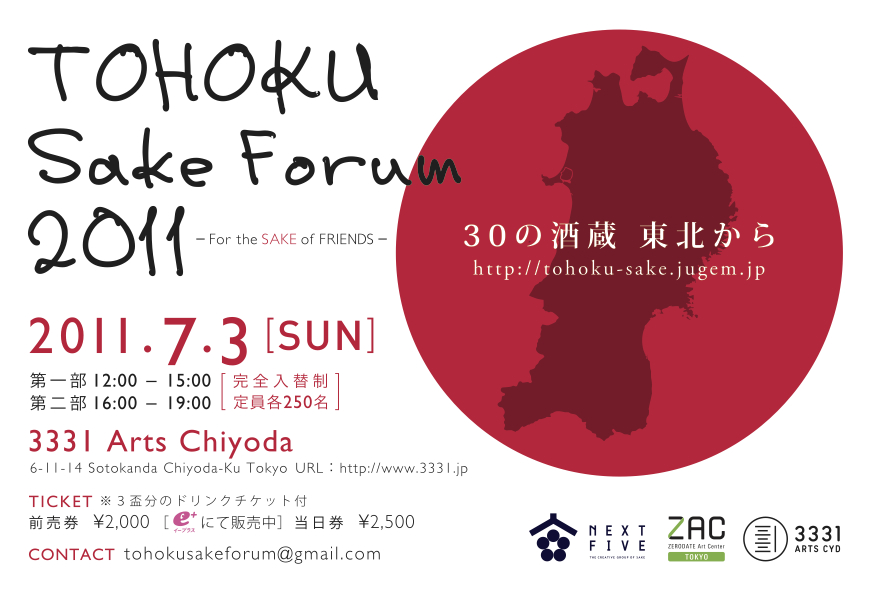
March 11, 2011. A massive earthquake struck the Tohoku region.
The path of connecting the “work, people, and things” that Akita has nurtured became the path to rebuilding. What was connected at that time took shape as an event called “TOUHOKU Sake Forum”.
This event was organized by NEXT FIVE, a group of breweries in Akida, and was held in Tokyo with the cooperation of 32 breweries in 6 prefectures in the Tohoku region that are dedicated to making local sake.
Casane Tsumugu was in charge of planning, PR, coordination, operation, and design direction of the event.
At this event, along with sake tastings from 32 breweries in the six Tohoku prefectures, the breweries themselves gave their own words about the current situation and their future plans, which are not often reported in the media. The organizer “NEXT FIVE” also went behind the scenes and held a total of seven talk events in one day. The event was well covered by the media and was very meaningful.
As a showcase for the north-northeastern part of Japan
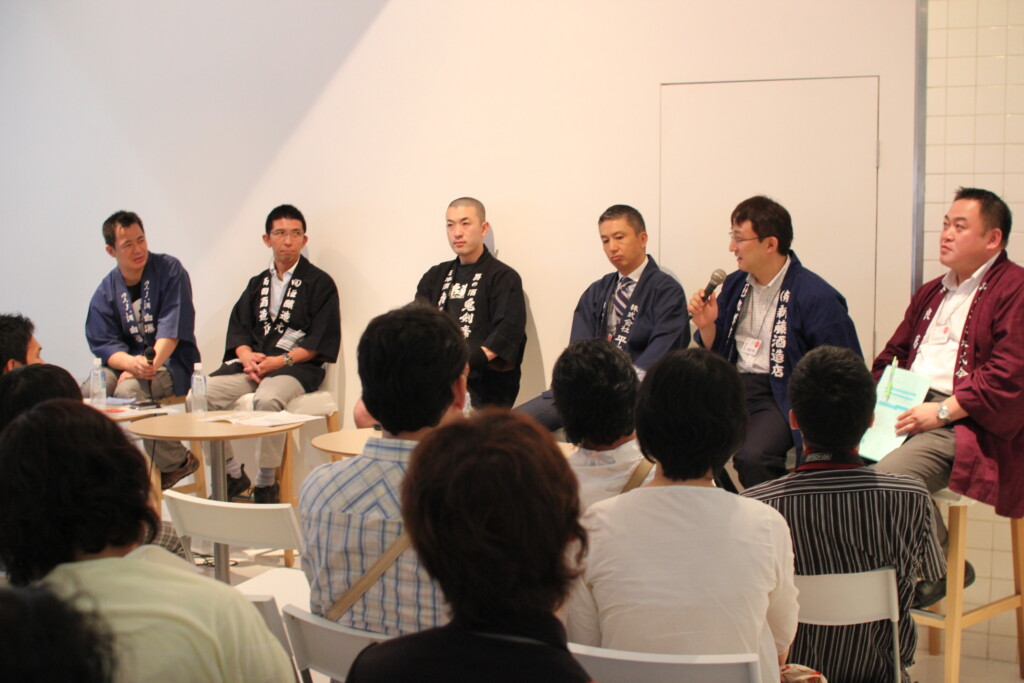
The desire of casane tsumugu. Our goal is to uncover the treasures of sustainable regional assets, not only in Akita Prefecture, but also in the North Tohoku region, and to optimize the value of these treasures. The most important thing is to connect these treasures with people’s thoughts and feelings, and link them to the future.
Careful consideration of things, people, and events
and pick up the universal charms that are unique to the region.
and sometimes reinterpreting the context or changing the form of the
Designing the underlying structure of things”.
Their ideas weave the future of the North Tohoku region, and before you know it, the shelves of the “market” are filled with products. This is the role that casanetsumugu plays as a “Northern Tohoku’s showplace”.



